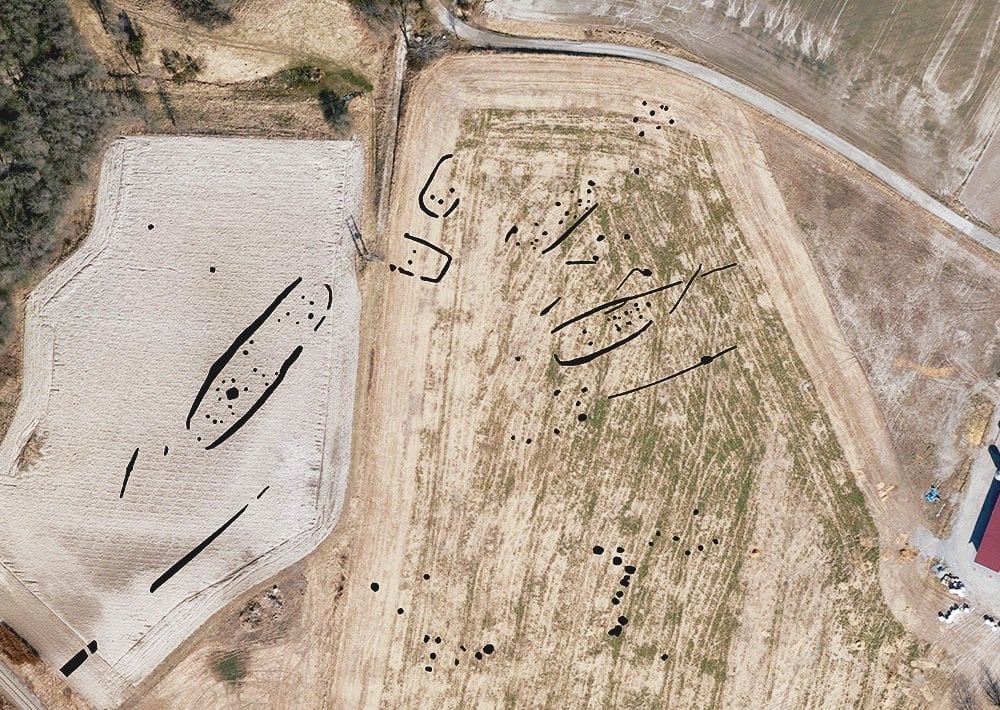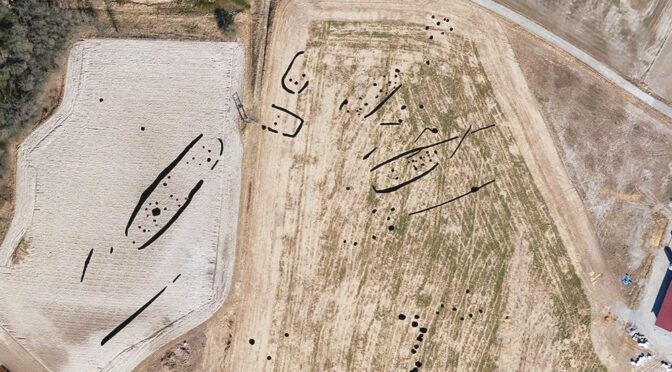Archaeologists Uncover One of the Largest Viking Longhouses in Scandinavia
Using ground-penetrating radar, scientists were able to find the Iron Age settlement and learn more about its place in Viking culture

Not far from where a Viking ship was unearthed in Norway three years ago, archaeologists have located one of the largest Viking longhouses ever discovered in Scandinavia, reports the Associated Press (AP). The buried structure is nearly 200 feet long and 50 feet wide.
Using ground-penetrating radar, a team led by Lars Gustavsen of the Norwegian Institute for Cultural Heritage Research (NIKU) detected the longhouse along with a cluster of others in Gjellestad, about 50 miles southeast of Oslo.
“We have found several buildings, all typical Iron Age longhouses, north of the Gjellestad ship,” says Gustavsen in “The most striking discovery is a 60-meter-long and 15-meter-wide longhouse, a size that makes it one of the largest we know of in Scandinavia.”

The longhouses—large communal structures commonly featured in Viking settlements—are part of what is believed to be a larger community established in the Iron Age, which dates from around 1200 to 600 B.C.E. Archaeologists found a total of five longhouses of varying sizes while using ground-penetrating radar to map the ancient village, writes Shanti Escalante-De Mattei for .
“We do not know how old the houses are or what function they had,” says Sigrid Mannsåker Gundersen, one of the archaeologists on the team, in the same statement. “Archaeological excavations and dating will help us get an answer to this.”
An earlier survey found a 130-foot-long building that may have been used for ancient rituals or as a feasting hall, reported Ida Irene Bergstrøm of Science Norway in 2022.
Researchers believe the presence of the large longhouse could indicate how wealthy and important Gjellestad was during the Viking era. They also discovered several plowed-over burial mounds in farm fields just north of the site.
“We are not surprised to have found these burial mounds, as we already know there are several others in the surrounding area,” says Gustavsen in the statement, adding, “Still, these are important to know about to get a more complete picture of Gjellestad and its surroundings.”
Located next to a large fjord, Gjellestad may have been an important base of operations for early Vikings. In the 2022 Science Norway article, archaeologist Camilla Cecilie Wenn said the region appears to have been a significant site of power.
“It’s really exciting to do a dig, one house, one ship,” said Wenn, leader of the Gjellestad excavation team. “But it’s when you see it all in a bigger context that society starts to appear.
“When you see the Gjellestad Viking ship in a wider frame, you can start appreciating the site as an important place of power for the Viking region, and not least on a national scale,” she said. “Only a handful of places in Norway are comparable.”
Gustavsen and his team plan to continue their research of the site in hopes of learning more about its importance, including how significant the village was to Viking development.
“Finding these longhouses confirms that Gjellestad was a central place in the late Iron Age,” he says in the statement. “Our hope is that within the next years, we will understand the relationship between the ship, the buildings and the rise of central places much better.”





